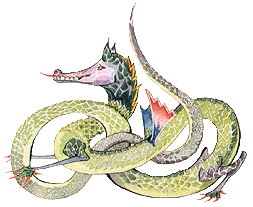Martyntje
This was my maternal grandmother's name. She was predominantly Indonesian, but had some Dutch ancestry resulting from the colonization of the country (hence the Dutch name). Does anyone have any information on it? I'm thinking it's a form of Martina, but I'd like to get some confirmation on this.


Replies
In The Netherlands, Martyn is a rare, variant spelling of Martijn (which is the Dutch form of Martin) - but pronounced the same. Also compare medieval spellings Marteyn and Marteijn, which are also pronounced the same as Martijn. In some cases in modern times, a man named Martijn may spell his name as Martyn when abroad, to make it easier for foreigners to pronounce his first name. A known example of this is Martyn LeNoble (who is actually Martijn LeNoble), the Dutch boyfriend of American actress Christina Applegate.
For a male bearer, Martijntje (or Martyntje, in the case of the variant spelling) is a diminutive form, as the -tje at the end is a Dutch diminutive suffix. A diminutive form such as this would mostly used be in a male bearer's childhood - in adulthood, it would be used seldomly (mostly in a joking or a derogatory manner). Never is a diminutive form like Martijntje or Martyntje ever used as an official first name for a male bearer in The Netherlands (contrary to e.g. English-speaking countries, where a man can be born with Charlie as an official first name - instead of Charles - and be Charlie for the rest of his life).
Now, for a female bearer it's different. In the case of a female bearer, the diminutive suffix -tje does not make the name seem like a diminutive like it does with the males, but it makes it a feminine form of Martijn (and as such is a legitimate feminine name and is used as an official first name for females). Think of how adding an -a to known male names will make them appear as a female name (Alberta, Roberta, etc.), which is a fashion derived from the Latin language.
For a male bearer, Martijntje (or Martyntje, in the case of the variant spelling) is a diminutive form, as the -tje at the end is a Dutch diminutive suffix. A diminutive form such as this would mostly used be in a male bearer's childhood - in adulthood, it would be used seldomly (mostly in a joking or a derogatory manner). Never is a diminutive form like Martijntje or Martyntje ever used as an official first name for a male bearer in The Netherlands (contrary to e.g. English-speaking countries, where a man can be born with Charlie as an official first name - instead of Charles - and be Charlie for the rest of his life).
Now, for a female bearer it's different. In the case of a female bearer, the diminutive suffix -tje does not make the name seem like a diminutive like it does with the males, but it makes it a feminine form of Martijn (and as such is a legitimate feminine name and is used as an official first name for females). Think of how adding an -a to known male names will make them appear as a female name (Alberta, Roberta, etc.), which is a fashion derived from the Latin language.
This message was edited 2/15/2012, 3:27 PM
Thank you for all this excellent information! I do wonder if she might have changed her name from Martijntje to Martyntje when she came to the United States. She was born in Indonesia in the 1920s, immigrated to the Netherlands shortly after World War II, then came to the United States in the early 1960s. Not that Martyntje would be a whole lot easier for English speakers, but it is something to ponder.
"Martyntje" isn't a rare variant, it's an old-fashioned transliteration. "Y" is "IJ" in cursive form, & was commonly used before Dutch orthography was simplified in the 1800s. "IJ" in Dutch is its own letter (pronounced like a very broad [AI], like the vowel sound in "bright", but almost with a Southern drawl). So you might see in written form "Martijn" or "Martyn" & they would be seen as the same spelling, except that in the second the individual letters of "ij" are joined.